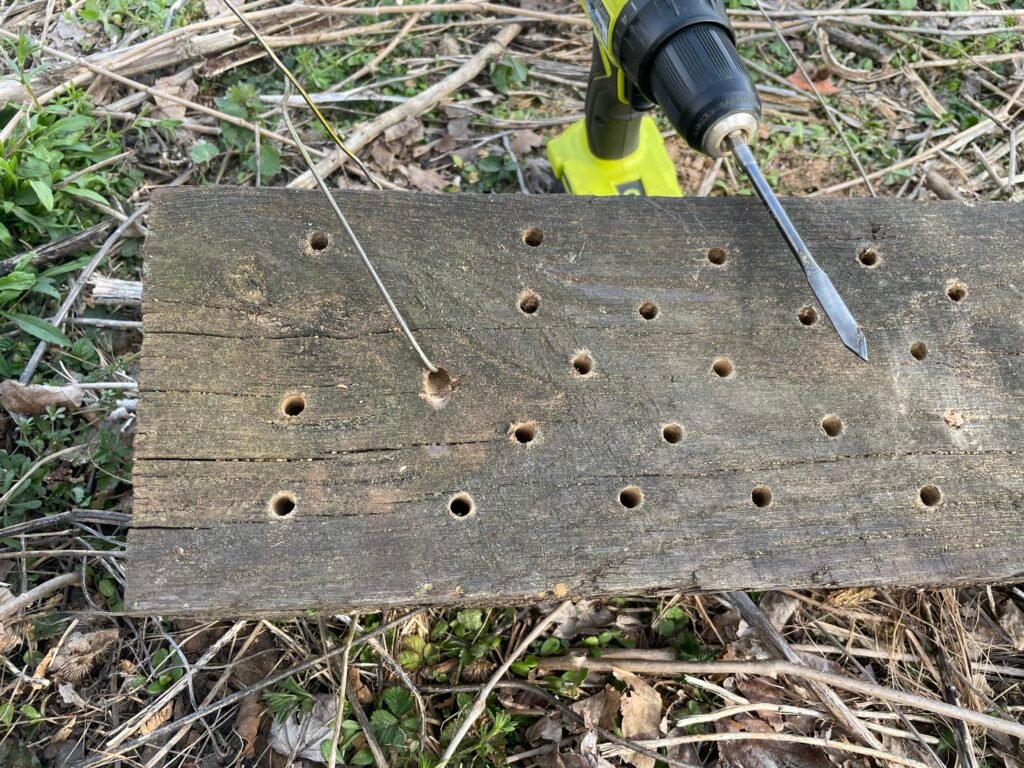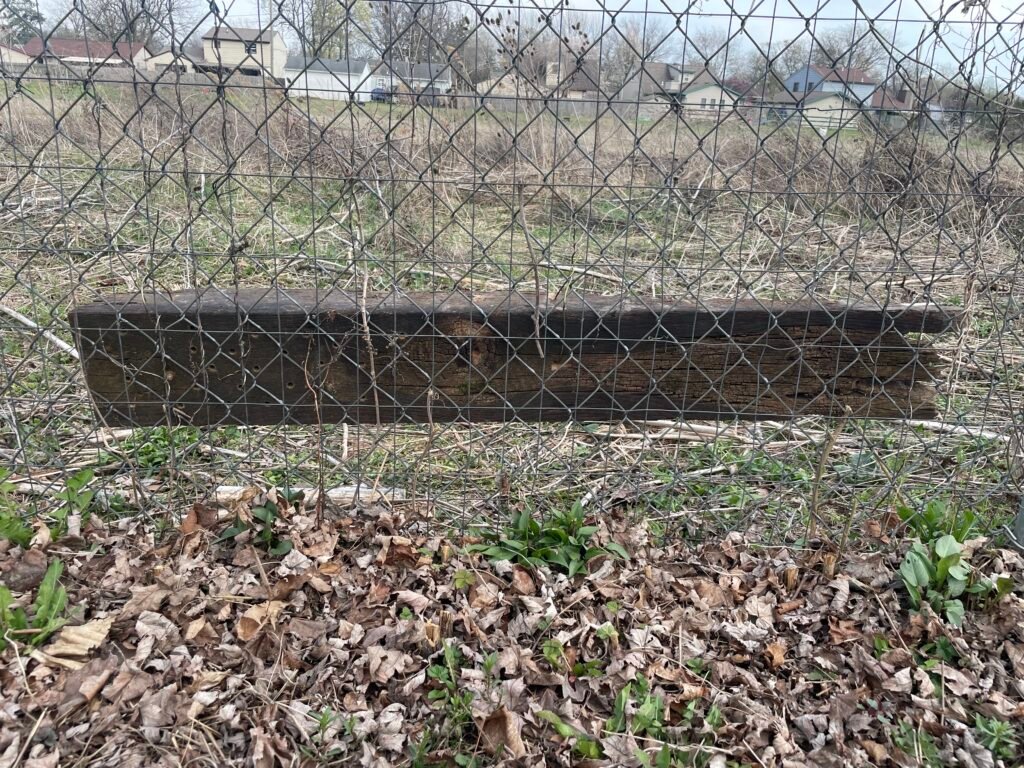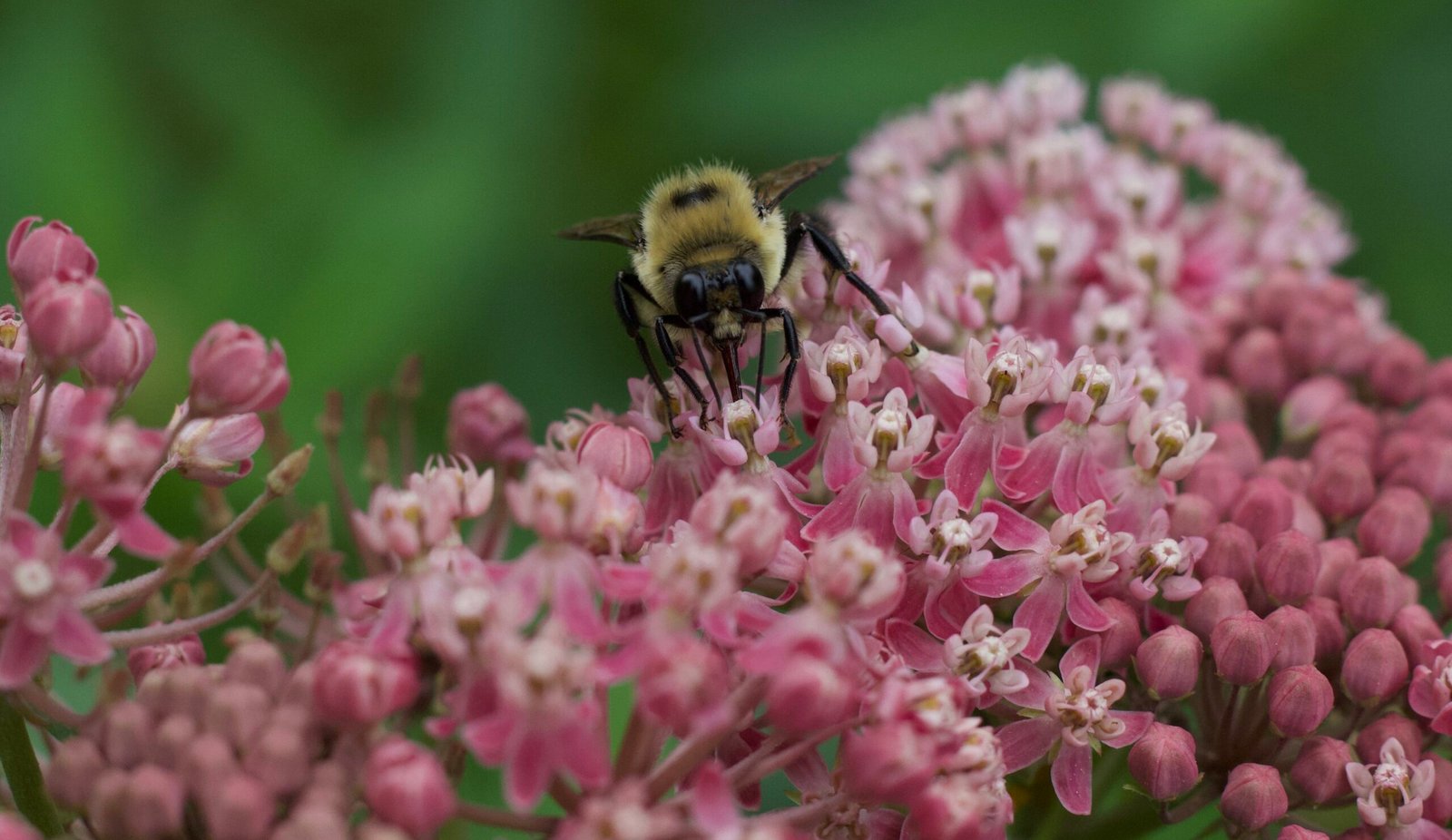When most people think of bees, they picture honeybees buzzing around a hive. But there’s a whole world of wild bees doing incredible work behind the scenes—and one standout group is the Osmia genus, commonly known as mason bees.
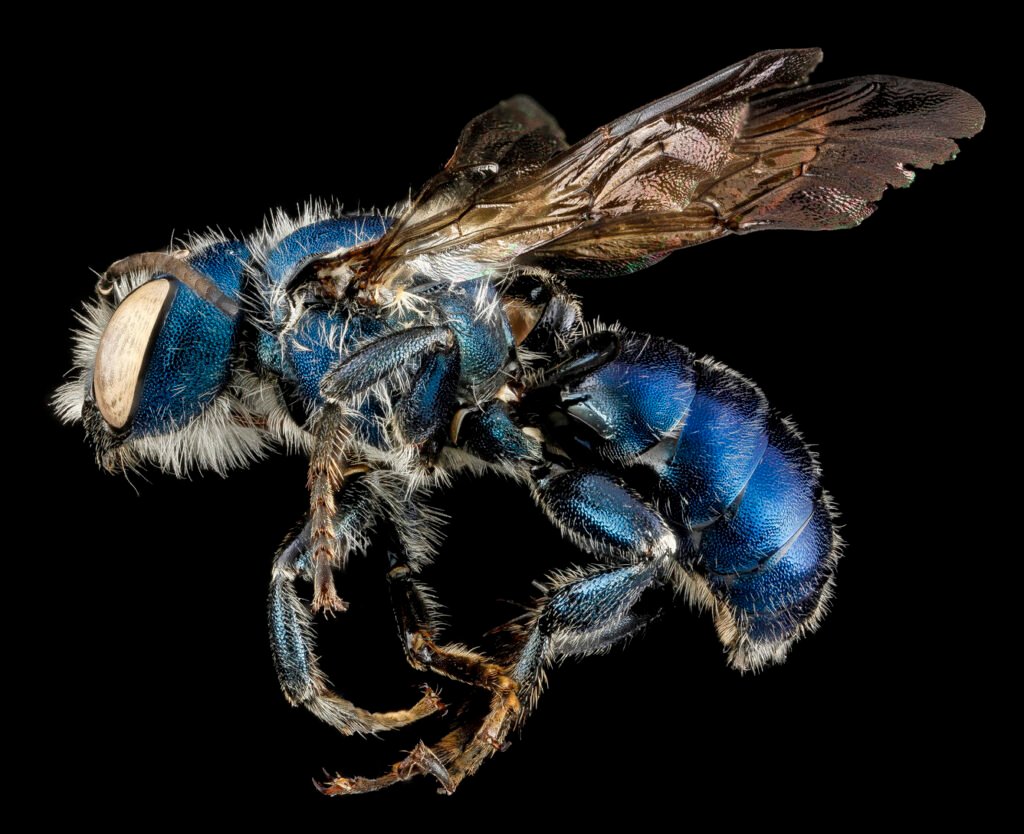
🌍 What is Osmia?
Osmia is a genus of solitary bees in the family Megachilidae, the same family as leafcutter and resin bees. With over 300 species worldwide, Osmia bees are most abundant in North America, Europe, and Asia, where they play a key role in pollination, especially in spring.
Unlike honeybees, they don’t live in colonies or produce honey. But don’t let their simple lifestyle fool you—these little bees are pollination powerhouses.
🛠 Why “Mason” Bees?
The name “mason bee” comes from their unique nesting behavior. Osmia bees often build nests in pre-existing cavities, like hollow reeds, beetle holes in wood, or cracks in stone—and they partition their nests with mud, just like a mason working with bricks.
Some species use other materials like chewed-up leaves or flower petals, depending on what’s available and their specific nesting strategy.
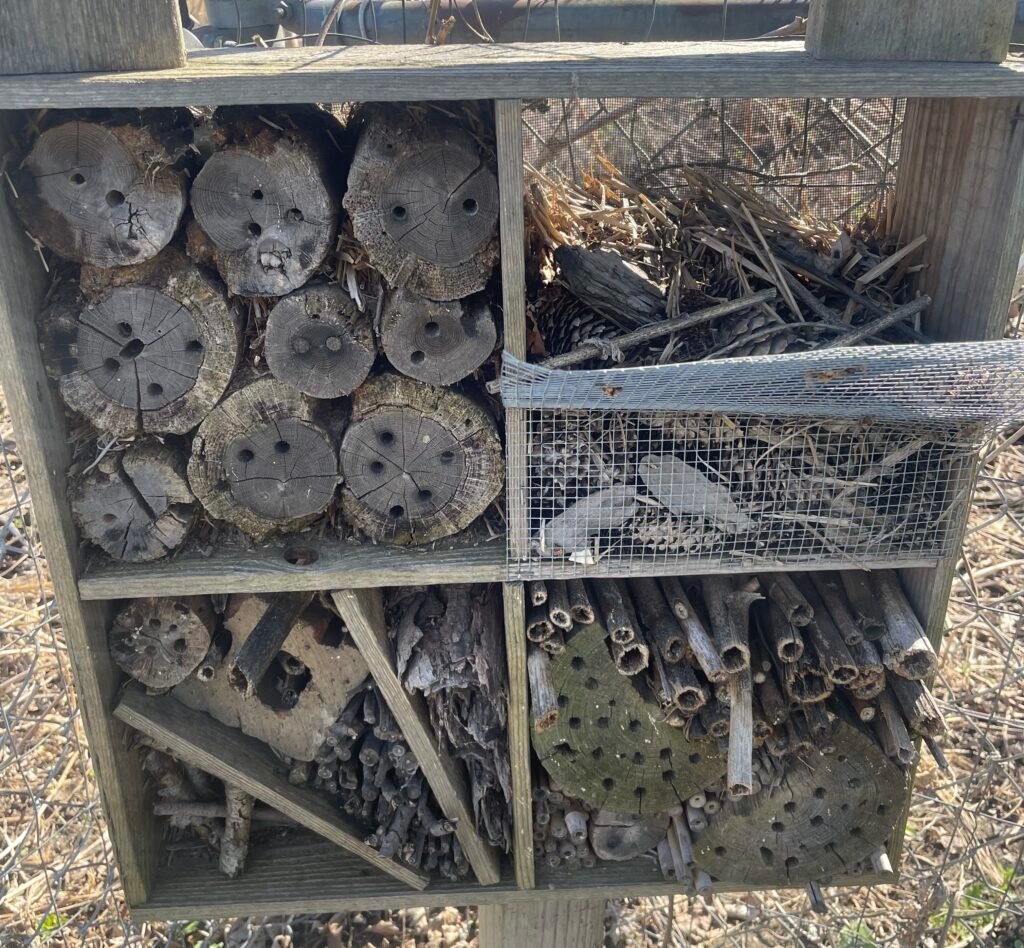
🐝 Physical Traits
- Size: Typically small to medium, around 7–12 mm
- Color: Often metallic blue, green, or black, giving them a jewel-like appearance
- Hair: Females have dense scopae (pollen-collecting hairs) on the underside of the abdomen instead of on the legs like honeybees
🌸 Osmia & Pollination
Osmia bees are specialist pollinators, especially active in early spring, when fruit trees and spring flowers bloom. Their “belly-flopping” pollen gathering technique (they actively rub their hairy bellies on flowers) makes them incredibly efficient—studies show they can pollinate fruit trees up to 10 times better than honeybees.
Key plants pollinated by Osmia bees:
- Apple, cherry, and pear trees
- Penstemon species
- Blueberries and native wildflowers
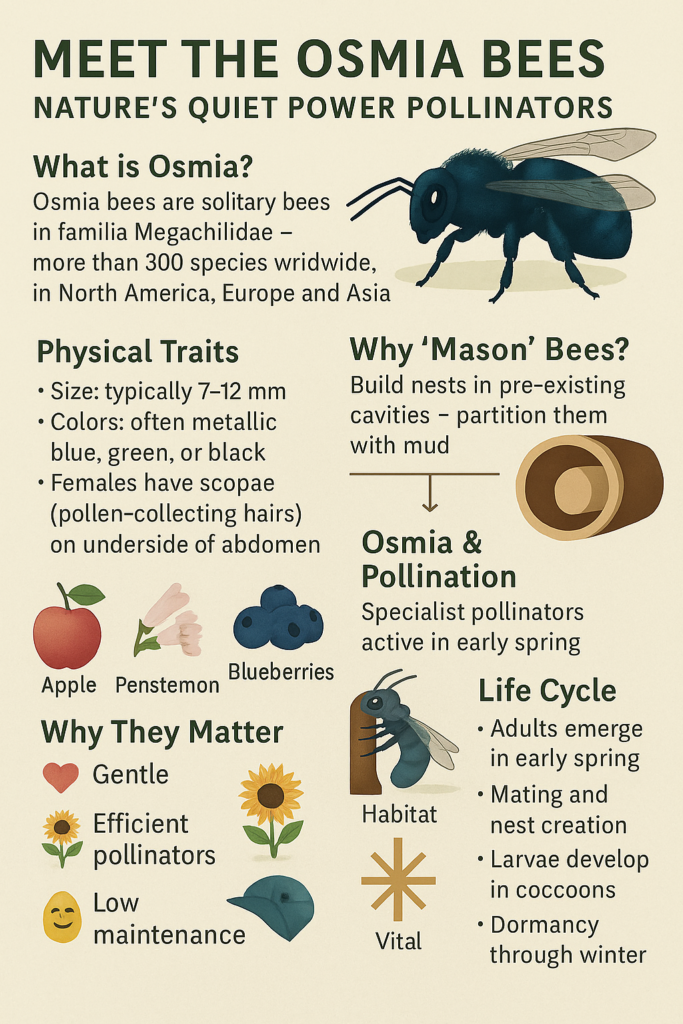
Check out the hive
The Hive is a personalized native plant database, curated from scientific resources and tailored to your exact ecoregion. It offers detailed growing information for over 75 species.
🏡 Habitat & Nesting
Osmia bees love open spaces near woodlands, gardens, or orchards. Because they nest in pre-existing holes, they readily adapt to human-made bee hotels filled with tubes or drilled wood blocks.
They’re great candidates for gardeners and orchard growers who want to support native pollinators and improve yields—no hive required.
🧬 Life Cycle
- Emergence: Adults typically emerge in early spring
- Mating: Shortly after emergence
- Nesting: Females build nests, stock each cell with pollen and nectar, and lay a single egg
- Development: Larvae hatch, feed, and spin cocoons
- Dormancy: The new generation remains dormant through winter, emerging the following spring
Each female is an independent worker, making her own nest and raising her young without help.
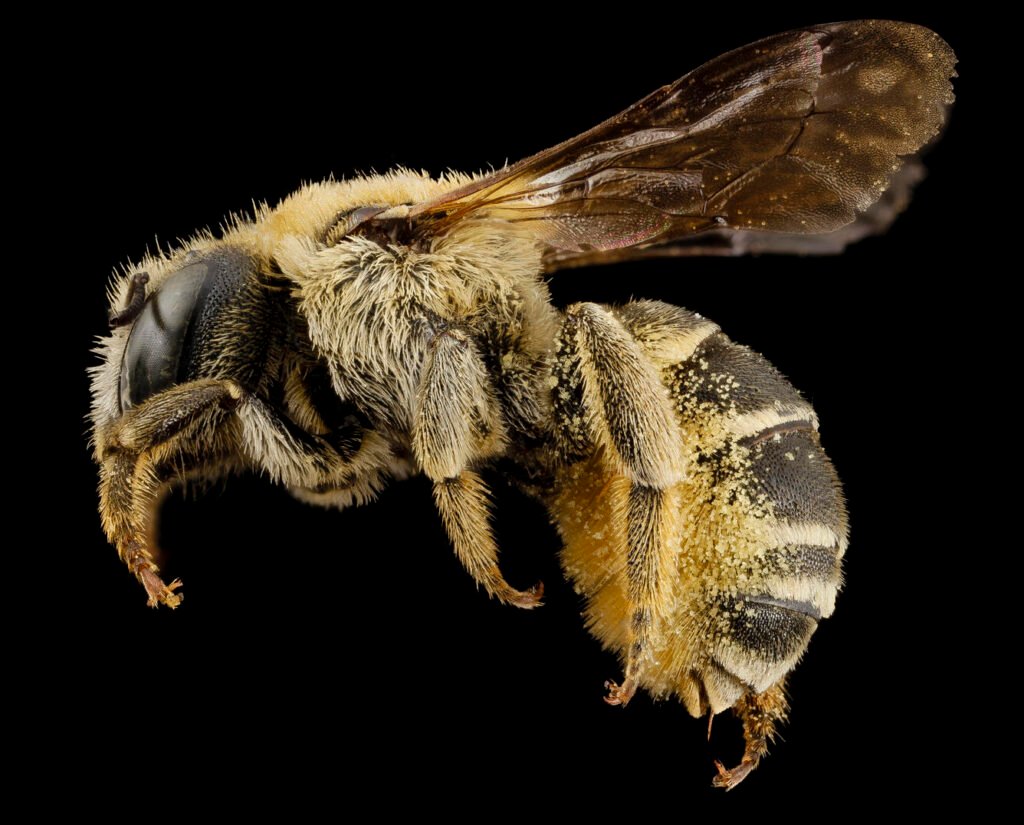
🧡 Why They Matter
Osmia bees are:
- Gentle (rarely sting unless provoked)
- Efficient pollinators (especially for spring crops)
- Low maintenance (great for home gardeners)
- Vital for biodiversity, supporting native plants and ecosystems
🌿 How to Support Osmia Bees
- Provide mud sources for nesting
- Set up a bee hotel in a sunny, sheltered spot
- Plant native flowering plants, especially early bloomers
- Avoid pesticides and chemicals in the garden
Whether you’re growing fruit trees or just love watching your garden buzz with life, Osmia bees are small but mighty allies. With a little effort, you can help these unsung heroes of pollination thrive—and enjoy the blooming rewards.
